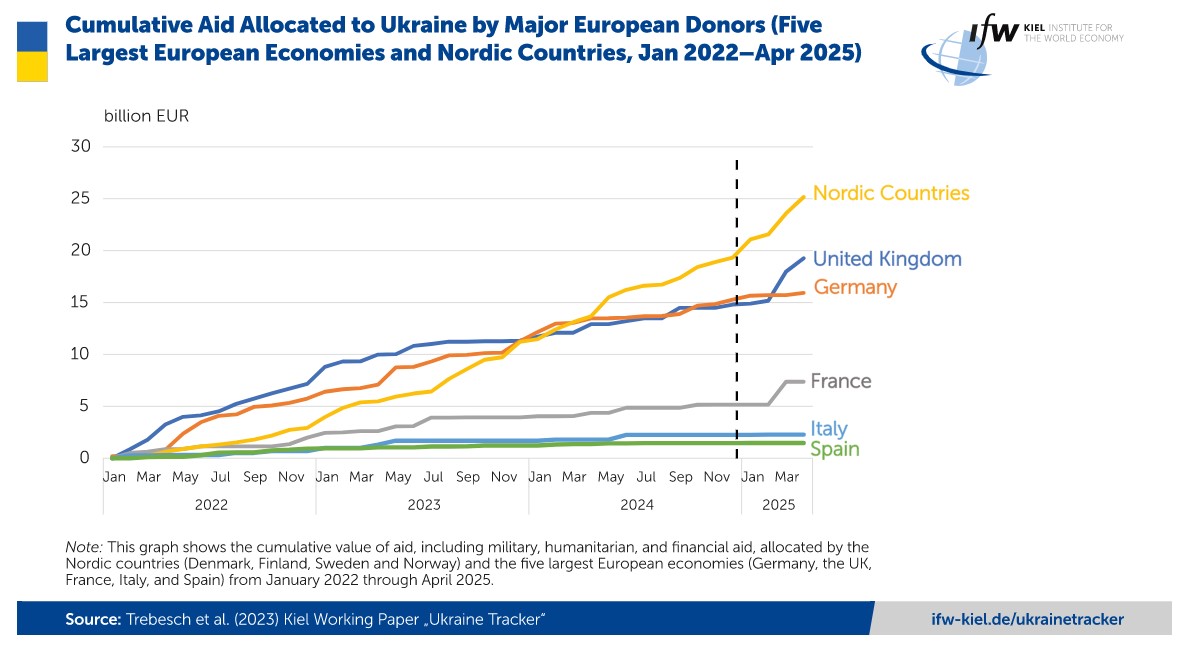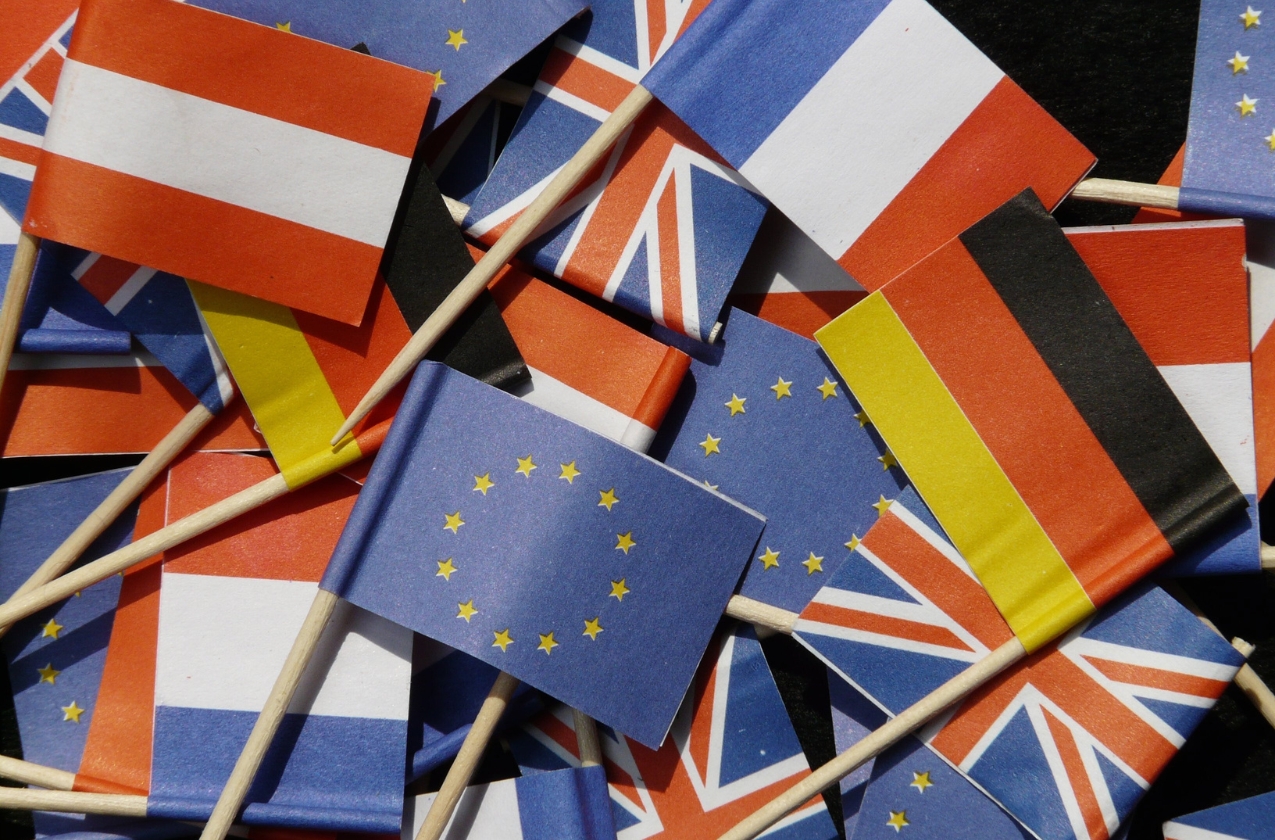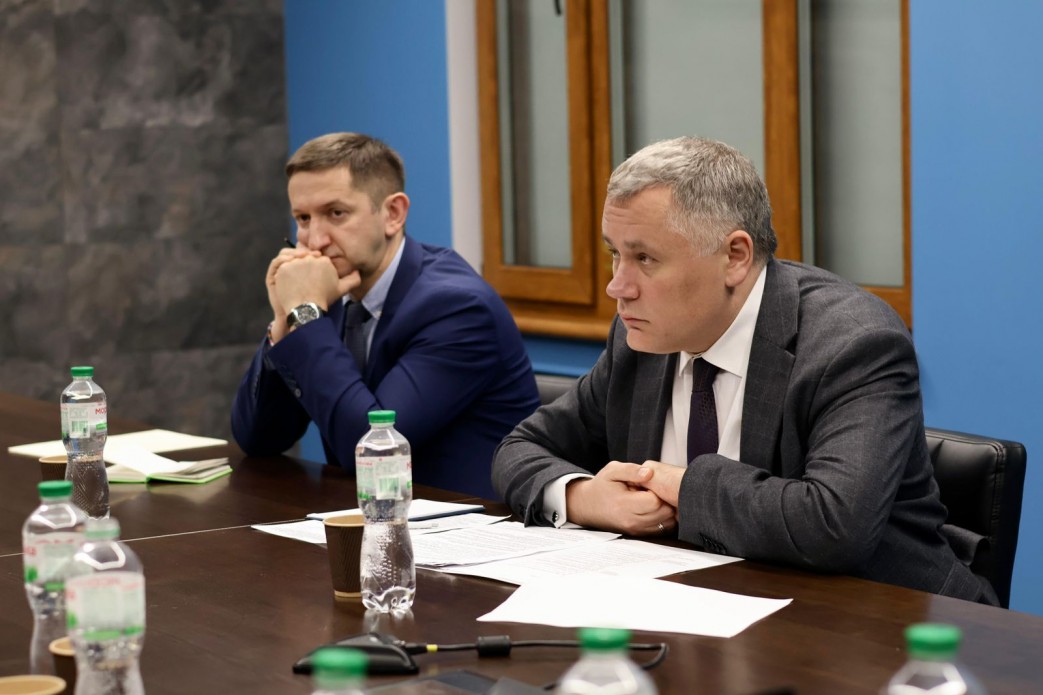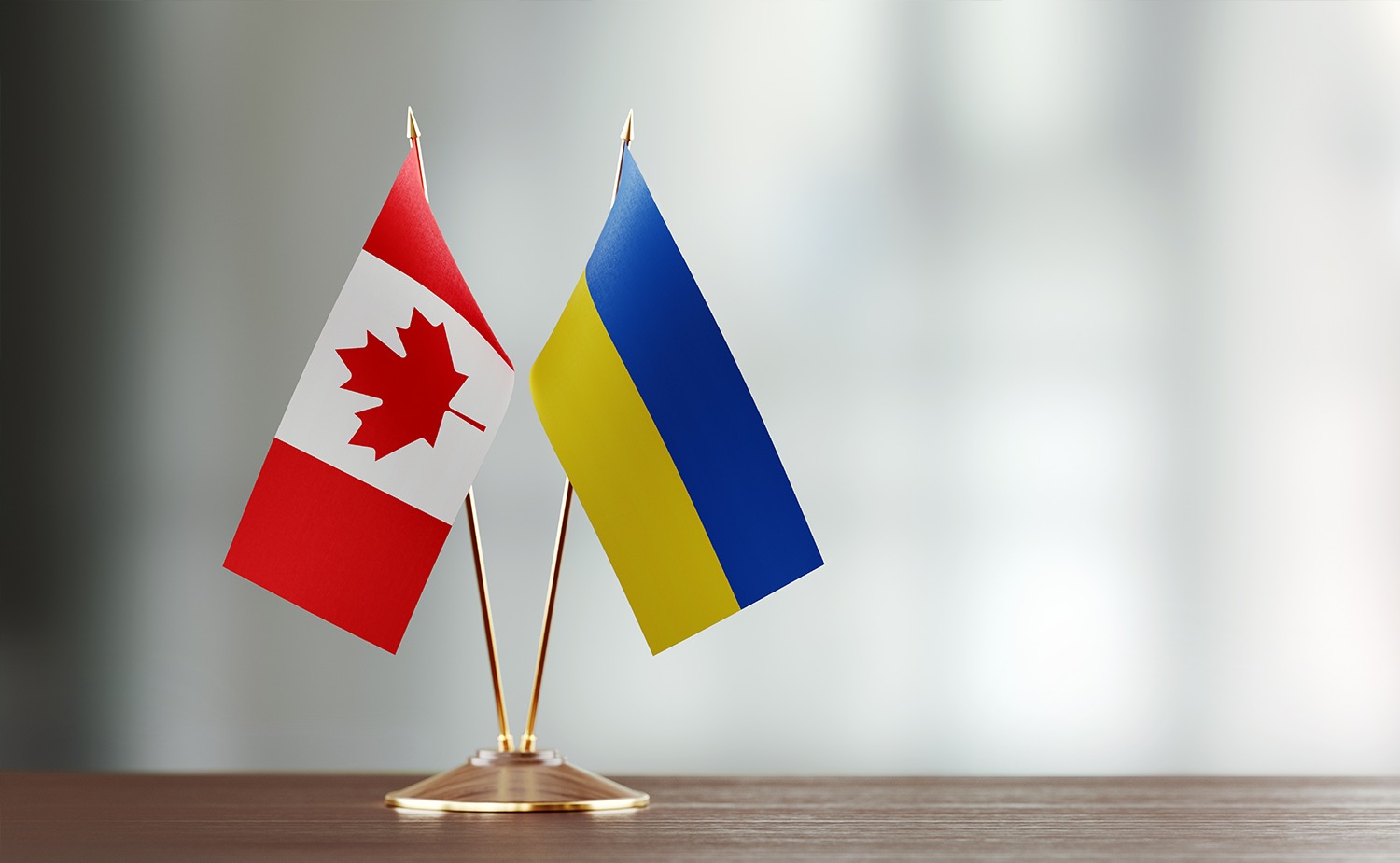Europe now partly compensates for the reduction in U.S. aid to Ukraine, with the Nordic countries and the United Kingdom leading the way.
This is according to a study by the Kiel Institute for the World Economy, Ukraine Support Tracker, as reported by Ukrinform.
The report notes that aid flows to Ukraine changed significantly in March and April 2025. While the United States — previously Ukraine's largest donor — provided no new aid during this period and has not announced any since January, European countries have increased their support. As a result, for the first time since June 2022, Europe surpassed the United States in total military aid, reaching €72 billion compared to the U.S.’s €65 billion.
According to the researchers, European support rose sharply in March and April. In just two months, Europe allocated €10.4 billion in military aid and €9.8 billion in humanitarian and financial assistance — the highest combined amount for any two-month period since the start of the war.
Recent data show that Europe’s average monthly aid from January to April 2025 slightly exceeded the average level seen from 2022 to 2024.
“Remarkably, Europe has filled the gap. The question is whether this is a temporary spike or the beginning of a more lasting shift in Europe’s role as Ukraine’s primary supporter,” said program director Christoph Trebesch.

The data also show that the recent increase in aid was driven by a small group of countries. The surge was not spread evenly across Europe. Nordic countries and the United Kingdom significantly increased their support, while others — such as Germany — maintained more moderate levels.
For instance, Sweden allocated €1.6 billion in March, and Norway provided €670 million in April — both record monthly totals for these countries. Overall, the Nordic nations increased their aid by €5.8 billion between January and April 2025.
Among the larger European economies, the UK also stepped up its assistance, providing €4.5 billion since the beginning of the year. Of this amount, €1.8 billion came from frozen Russian assets, rather than new budget expenditures. France contributed €2.2 billion, including nearly €195 million in frozen assets. EU institutions also played a major role, allocating €12.2 billion during the same period.
By contrast, other major European economies showed only marginal increases. Spain and Italy allocated just €10 million and €20 million respectively in 2025.
Germany provided €650 million in 2025 — a decrease of around 70% compared to the same period in 2024. Notably, these figures are independent of the recent government decision to stop publishing detailed military aid data on its official website.
“The strong engagement by Nordic countries stands out even more in light of the U.S. halting new aid. What’s striking is how little Germany has provided in recent months. Rather than increasing support following Trump’s inauguration, we see a sharp drop in German assistance compared to previous years. The same trend is evident in Italy and Spain,” Trebesch explained.

Ukraine Support Tracker lists and quantifies military, financial, and humanitarian aid pledged to Ukraine since January 24, 2022. The current analysis covers aid through April 2025. It includes 40 countries, among them EU member states, other G7 nations, as well as Australia, South Korea, Turkey, Norway, New Zealand, Switzerland, China, Taiwan, and India. EU institutions are listed as a separate donor. The tracker includes intergovernmental commitments only; private donations or support from international organizations such as the IMF are not included in the main database. Aid directed to other countries, such as Moldova, is also excluded.



















